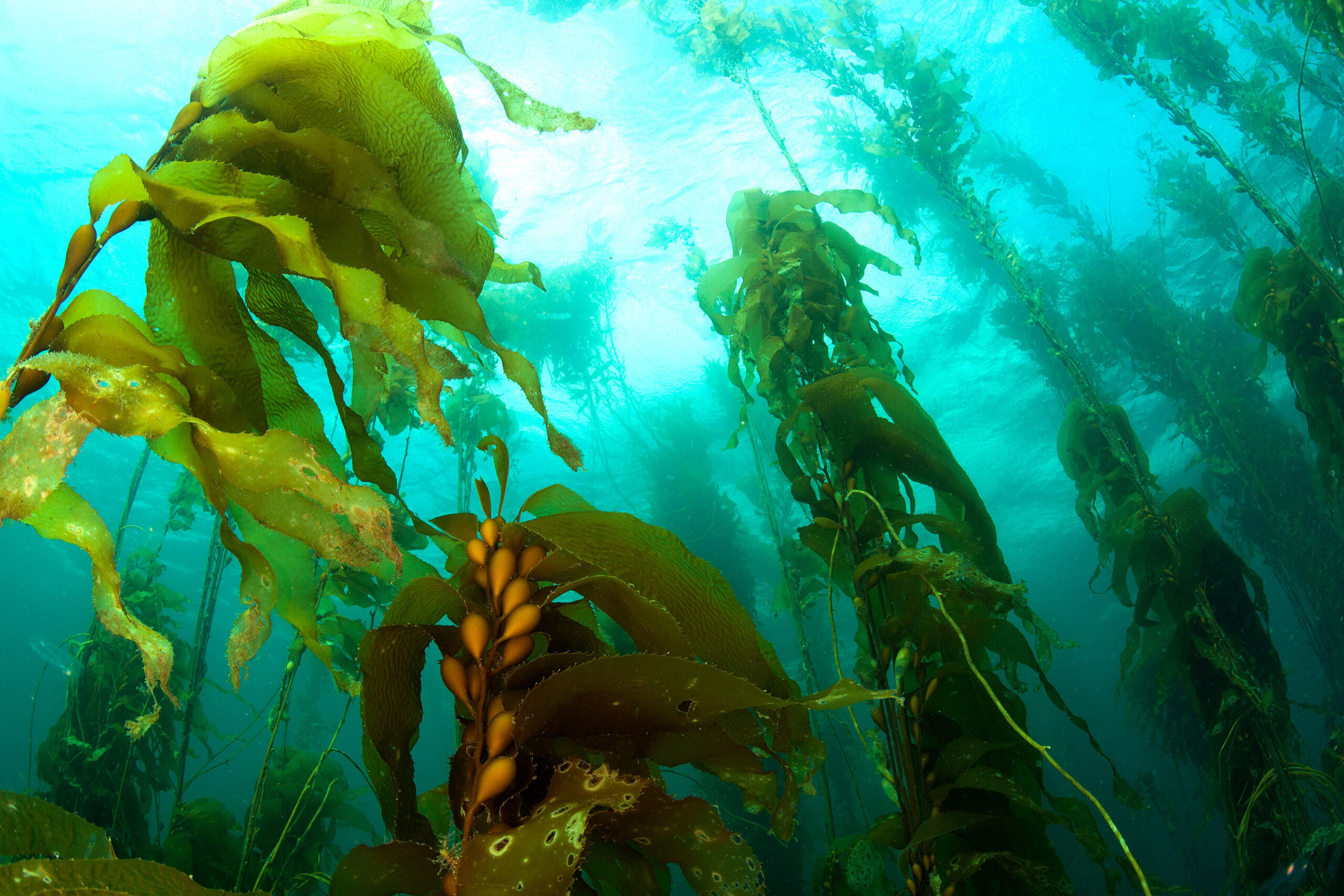Immense forests of giant kelp once formed dense floating canopies around Tasmania’s coastline. Historically it was so abundant that it was marked on maritime charts as a shipping hazard, but today around 95% of this community has vanished from the seas around Tasmania.
Its decline is linked to climate change and the increasing influence of warm and nutrient poor waters from the East Australian Current. This poses a challenge for conservation as recovery efforts need to consider the continuing influence of warming ocean waters – which is precisely what researchers at Tasmania’s Institute for Marine and Antarctic Studies (IMAS) set out to do.
Through a partnership project with the National Environmental Science Program’s Marine Biodiversity Hub, OzFish Unlimited, The Climate Foundation and the Tasmanian Smart Seafood Partnership between NRM South and the Tasmanian Seafood Industry Council (funded through the Australian Government’s Smart Farming Partnerships component of the National Landcare Program), IMAS researchers began investigating if warm-tolerant giant kelp could be used as a foundation for future restoration efforts.
Dr. Cayne Layton, who is leading the project alongside Professor Craig Johnson, began by collecting natural giant kelp spores and then culturing the juveniles in the laboratory. They then used the individuals that showed the most tolerance to warmer conditions to establish restoration trial patches at three sites on the east coast.
Discussing the outcomes of the project to date, Dr. Layton was pleased to report that progress has been positive. ‘At two of our three sites we’ve had great success with our giant kelp plantings, and despite the warm summer our ‘super kelp’ seems to be doing well,’ said Cayne. ‘Now that the juvenile kelp plants have passed the warm temperature ‘danger zone’ of summer, we’re optimistic that the majority will continue to survive and thrive.’
Jennifer Hemer, Water and Marine Program Manager for NRM South, sees the project as a step toward the restoration of an iconic ecosystem. ‘Healthy giant kelp communities bring immense benefits to society,’ explained Jennifer. ‘They play important roles in cycling of blue carbon and coastal nutrients, and provide habitat for commercially and recreationally important species.’
Although questions remain – including how well super kelp offspring will perform and how trial patches will be scaled up to create new forests – the results to date are encouraging and show potential as one of many solutions for adapting to climate challenges.
– Ends –
